9 Best Native Plants for Milwaukee
BY LASHONDA TUCKER | APRIL 7TH, 2023 | LANDSCAPING, MILWAUKEE, WISCONSINAfter visiting the art galleries in The Historic Third Ward, you may want to bring some of Milwaukee’s historic charm home with you. While you can’t grab a stage from one of the Third Ward’s theaters, you can set up your yard to reflect the city’s outdoor landscape and the Wisconsin native plants. We’ve found 9 native plants that thrive in Milwaukee’s short, mild summers and cold winters.
In this article, we’ll cover:
- 9 Native Plants for Your Milwaukee Yard
- How to Choose Native Plants for Your Milwaukee Landscape
- FAQ About Native Milwaukee Plants
- Where to Find Native Plants in Milwaukee
11 Native Plants for Your Milwaukee Yard
1. New England Aster (Symphyotrichum novae-angliae)
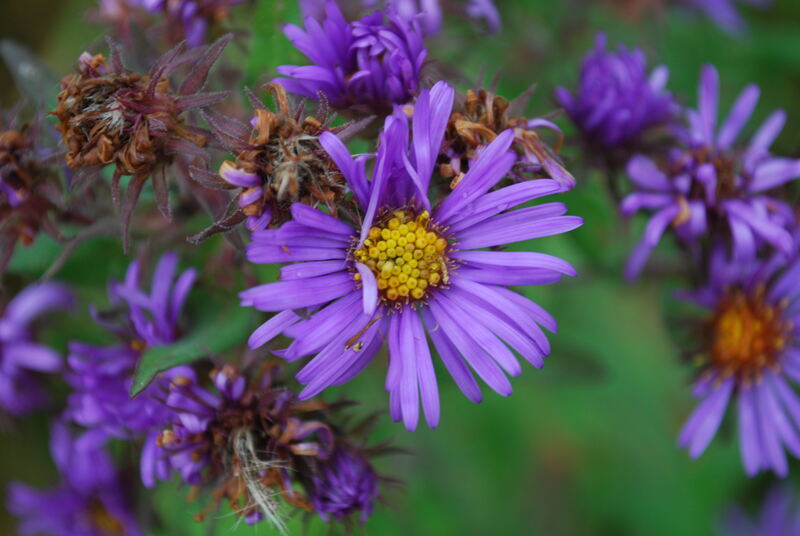
Photo Credit: Joshua Mayer / Flickr / CC BY-SA 2.0
New England aster is a Milwaukee favorite because it blooms for at least 6 weeks, starting from late summer to late fall. It’s built to withstand the cooler temperatures of southeastern Wisconsin.
This flower will stop you in your tracks with its bright pink-reddish daisy-looking petals. As they droop and close at night or when it’s cloudy, they appear to fall asleep. They awaken by reopening to show off their yellow center when the sun returns.
New England aster can tower to heights of 6 feet, easily signaling to butterflies to come and have some of its nectar. If grown in the right conditions, this plant saves you money by reseeding if not cut back after it flowers.
New England aster thrives well in yards with a lot of sun or just a little shade. It’s usually found growing as a prairie plant. Use this daisy look-alike in butterfly gardens and borders.
Plant type: Flower
Hardiness zones: 4 to 8
Sun: Full sun, partial shade
Soil: Sandy, loamy, clay
Duration: Perennial
Bloom time: Late summer, autumn
Water needs: Medium
Mature height: 3 to 6 feet
Maintenance: Medium. May require staking or other support if it grows tall. Pinch back stems before midsummer to control the plant height and produce more flowers.
2. Purple Coneflower (Echinacea purpurea)
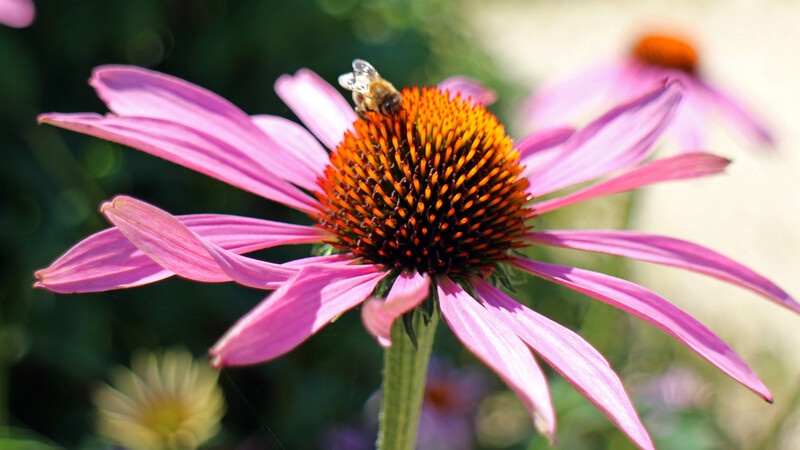
Photo Credit: Wallpaper Flare
Purple coneflower’s trademark is its double-flower. A bushier, smaller array of smaller petals resembling pom-poms sit atop longer petals.
It’s a contest between which is more striking, the purple coneflower or the New England aster. Both are rich in color. Also called pink double delight because of its pink-purplish double flowers, the purple coneflower is well-adapted to Milwaukee winters. The flower blooms until the first frost.
You’ll see these flowers generously decorating meadows and prairies. They add wonderful excitement to pollinator gardens, wildflower gardens, and borders. If pink is not your favorite color, no worries. The purple coneflower has cultivars that come in many colors and sizes.
Purple coneflower is great for homeowners that don’t want to replant every season. Like the New England Aster, the purple coneflower reseeds if the seed heads are not removed.
Plant type: Flower
USDA Hardiness Zone: 3 to 8
Sun: Full sun, partial shade
Soil: Sandy
Duration: Perennial
Fragrance: Light, sweet, honey-like
Bloom time: April to September
Water needs: Medium
Mature height: 2 to 5 feet
Potential hazards: None
Maintenance: Low
3. Butterfly Milkweed (Asclepias tuberosa)
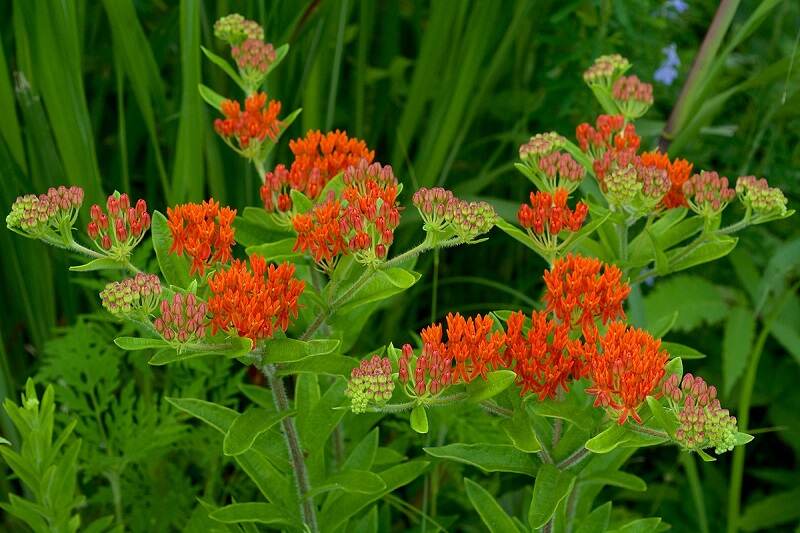
Photo Credit: Eric Hunt / Wikimedia Commons / CC BY-SA 4.0
If you like bright flowers, the stunning orange petals sprouting from butterfly milkweed’s wide green leaves will be an asset to your garden. On the other hand, if you have children, you may want to stay clear of this plant or use it with caution. This perennial herb, which also goes by the name butterfly weed, is not an herb you want to cook with. It has low poison severity, and all parts are considered poison. It can cause vomiting or spasms if ingested and skin or eye irritation when touched.
Butterflies, bees, and hummingbirds flock to butterfly milkweed for the nectar. Monarch butterflies depend on milkweed plants for their existence, so you’ll give back to the ecosystem by planting this nonedible herb in your butterfly garden.
Butterfly milkweed likes to be left alone once planted, so make sure you’re certain when you give it a home. It doesn’t transplant well. Fortunately, it’s pest and disease tolerant and requires little maintenance. It’s a great addition to borders and cottage gardens in yards where small children and pets do not wander into the vegetation.
Plant type: Perennial herb
USDA Hardiness Zone: 3 to 9
Sun: Full sun
Soil: Clay, loam, sand
Duration: Perennial
Fragrance: Vanilla
Bloom time: May to September
Water needs: Low
Mature height: 1 to 2 feet
Potential hazards: Poisonous to animals and humans if ingested. Possible skin and eye irritant if touched.
Maintenance: Low
4. Red Columbine (Aquilegia canadensis)
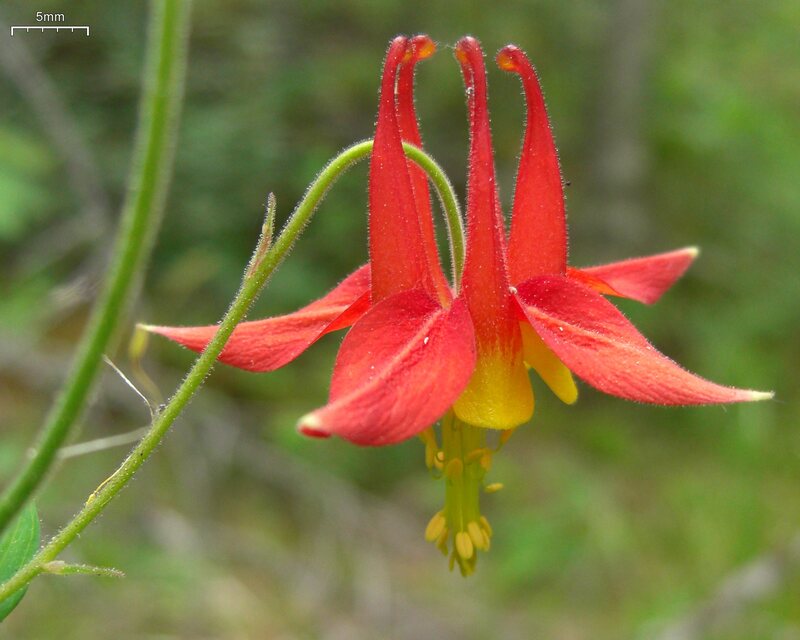
Photo Credit: Jason Hollinger / Wikimedia Commons / CC BY 2.0
You can see why red columbine is also called little lanterns. The red and yellow tubular flowers droop. Sometimes the petals can be found flaring out a little, exposing their yellow stamens. This flower may not be ideal if people tend to discard lit cigarettes on your property. Red columbine is moderately flammable.
Red columbine is most at home in soils that remain moist and on properties that get a lot of sun. But it will adapt to partial shade. The flowers come in early spring and only last about a month. But the bright green leaves stay through the summer and make a wonderful groundcover.
Planting these little lanterns allows you to give hummingbirds and other birds a reason to visit. Touching the sap could irritate the skin, so be careful. This plant is easy to grow and a great way to complement a city garden or add some flavor to underplantings for roses and shrubs.
Plant Type: Flower
USDA Hardiness Zone: 3 to 8
Sun: Full sun or partial shade
Soil: Clay, silt, or sandy soil that’s well-drained, moist, dry-ish
Duration: Perennial
Bloom Time: Spring and summer
Water Needs: Weekly or whenever the soil is completely dry
Mature Height: 1 to 3 feet
Potential Hazards: Moderately flammable/risk of fire
Maintenance Needs: Low; deadhead blooms as needed, cut back in late summer
5. Showy Goldenrod (Solidago speciosa)
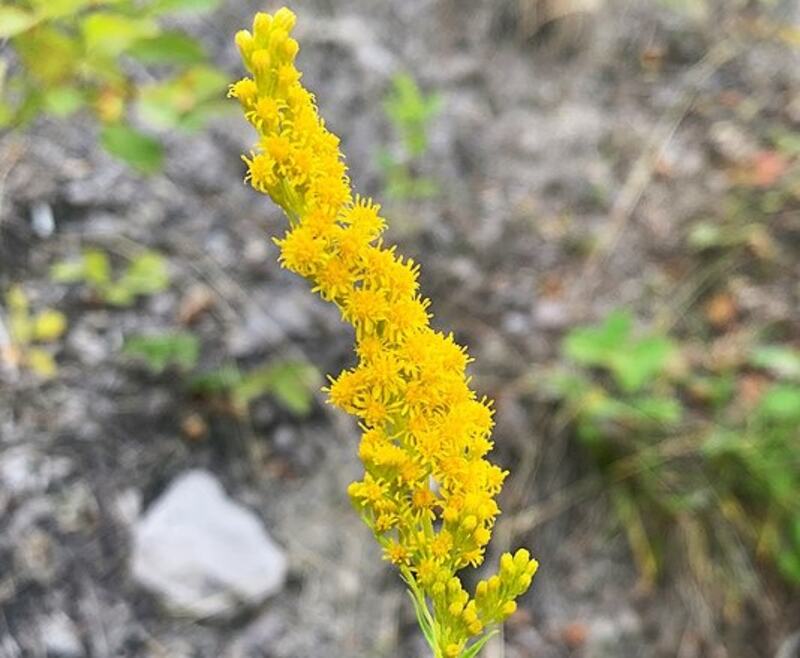
Photo Credit: Dseiver / Wikimedia Commons / CC BY-SA 4.0
Showy goldenrod’s bright yellow cluster of small petals looks optimistically toward the sky. The flower has medium flammability, so it’s best planted away from areas where the barbeque grill is fired up. It works well with other wildflowers and adds sunshine to wildlife gardens, borders, or flower beds.
It’s well-adapted to most soils, so if you have dry or poor soil, showy goldenrod will not let you down. It even self-seeds. The butterflies and birds coming for a nibble are a nice treat for homeowners, but get ready for the bees and beetles it also attracts.
Plant type: Flower
Hardiness zones: 3 to 8
Sun: Full sun, partial shade
Soil: Rocky, clay
Duration: Perennial
Fragrance: Mild
Bloom Time: July to September
Water needs: Low to medium
Mature height: 1 to 5 feet
Potential hazards: Medium flammability
Maintenance: Low to Medium; May have to divide it every 2 years for size management.
6. Wild Bergamot (Monarda fistulosa)
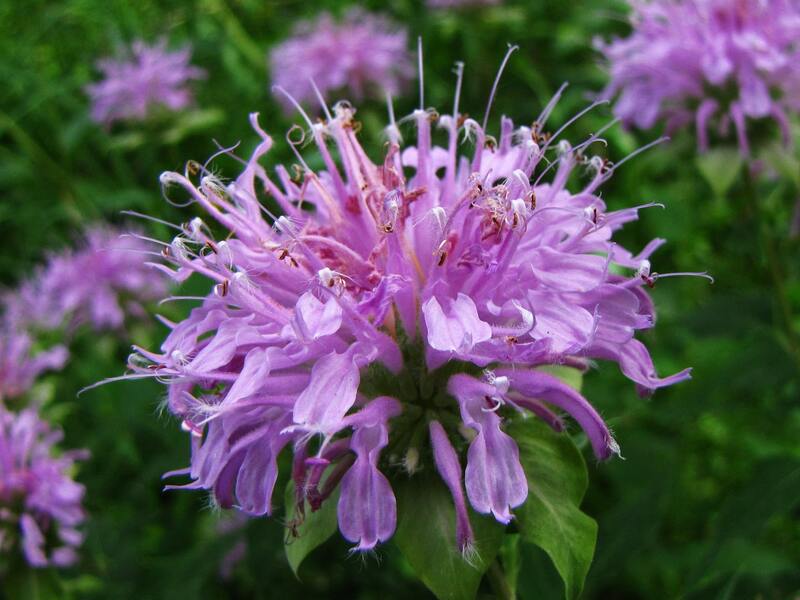
Photo Credit: U.S. Fish and Wildlife Service Headquarters / Flickr / CC BY 2.0
Make sure no one uses this flower as an ashtray, as it’s moderately flammable. Flammability appears to be a theme with many of these native Milwaukee plants. But don’t let that scare you away. This flower makes up for its fire rating with other desirable qualities, like being tolerable to multiple soil types, including poor soil, which is not uncommon in Milwaukee.
The wild bergamot’s essential oil is a natural repellent to certain mosquito species, which is another benefit of this native plant. The lavender tubular flowers attract butterflies and hummingbirds. If Bambi and Bugs Bunny like to visit your yard, you’ll appreciate the deer- and rabbit-resistant qualities of wild bergamot.
Plant Type: Flower
USDA Hardiness Zone: 3 to 9
Sun: Full sun or partial shade
Soil: Shallow, rocky soil or clay that’s moist, well-drained, or dry-ish
Duration: Perennial
Fragrance: Yes; of mint and oregano emitted from foliage
Bloom Time: Summer
Water Needs: Natural rainfall should be sufficient; withstands dry soil for a while
Mature Height: 2 to 4 feet
Potential Hazards: Moderately flammable/risk of fire
Maintenance Needs: Low; drought-tolerant, resistant to deer and rabbits
7. Prairie Blazing Stars (Liatris pycnostachya)
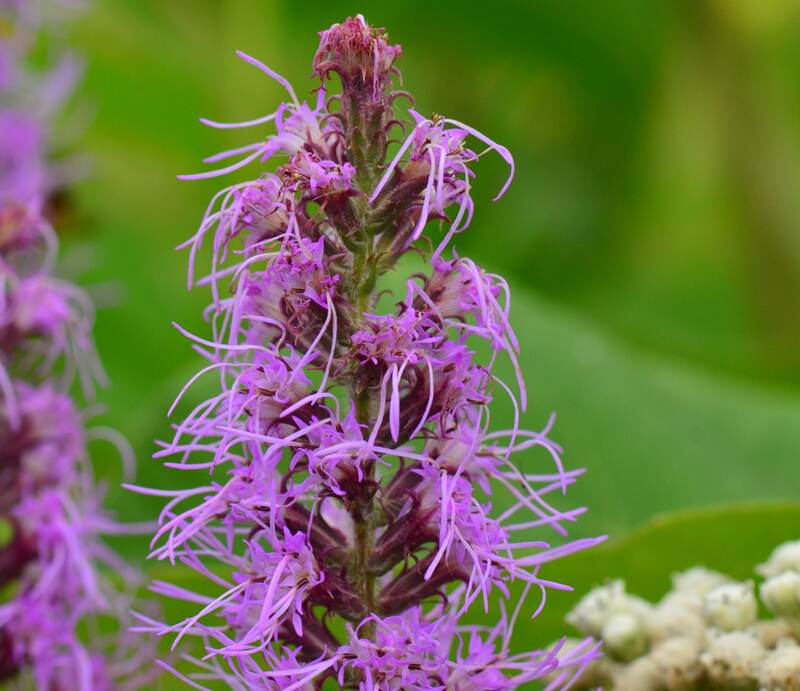
Photo Credit: wackybadger / Wikimedia Commons / CC BY-SA 2.0
This flower blooms from the top down. For four weeks or more, these purple, white, or pink fuzzy flowers sit atop tall multi-pronged grass-like leaves. Milwaukee bird lovers love to send these stars blazing in their gardens because they’re easy to grow and maintain, and they feed birds in the winter.
Blazing stars are cold, heat, and drought tolerant. Use them as perennial borders or in native gardens. If you’re trying to impress someone who appreciates nature, put some in a dried flower arrangement as a gift. They’ll stand out like a captured shooting star.
Plant Type: Flower
USDA Hardiness Zone: 3 to 9
Sun: Full sun or partial shade
Soil: Moist clay, silt, or sandy soil that’s well-drained
Duration: Perennial
Fragrance: None
Bloom Time: Summer
Water Needs: Low, does not need additional watering once established
Mature Height: 1 to 5 feet, depending on species
Potential Hazards: N/A
Maintenance Needs: Low once established; They require deadheading regularly, which is pruning away seed heads and old growth to allow re-flowering and new growth.
8. Rattlesnake Master (Eryngium yuccifolium)
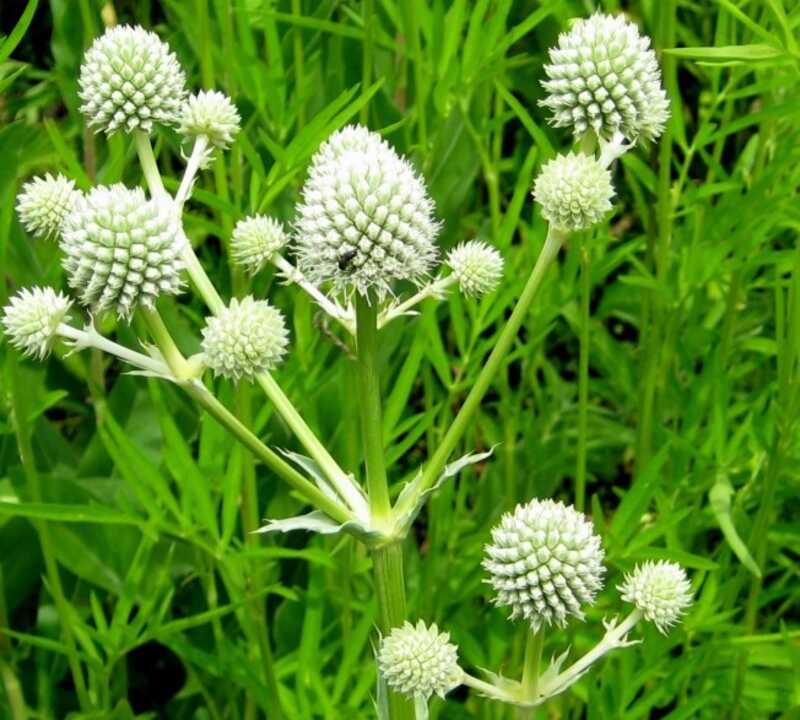
Photo Credit: Crazytwoknobs / Wikimedia Commons / CC BY 3.0
Rattlesnake Master has a q-tip looking, ball-shaped appearance at its tip. The white parts stick out like porcupine needles. This perennial forb tends to clump together in clusters when growing.
It’s forgiving of soil type, as it thrives in many types, but it prefers well-drained soil. Rattlesnake master is drought-tolerant, so it should work well in a xeriscape design. It has no known toxic hazards to humans, but it has sharp, spiky leaves, so you may not want to touch it.
Plant this evergreen in city gardens, or use it as a border or in your flower garden. This plant gets floppy if grown in too much shade. Unless you want wilted-looking plants, make sure this rattlesnake is placed somewhere with lots of sun.
Plant Type: Evergreen wildflower
USDA Hardiness Zone: 3 to 9
Sun: Full sun
Soil: Prefers loamy, dry sand and well-drained soil; Adapts well to most soil, including clay and shallow rocky soils
Duration: Perennial
Fragrance: Honey
Bloom Time: Mid-summer
Water Needs: Low once established
Mature Height: 3 to 5 feet
Potential Hazards: None known
Maintenance Needs: Low
9. Elderberry (Sambucus canadensis)
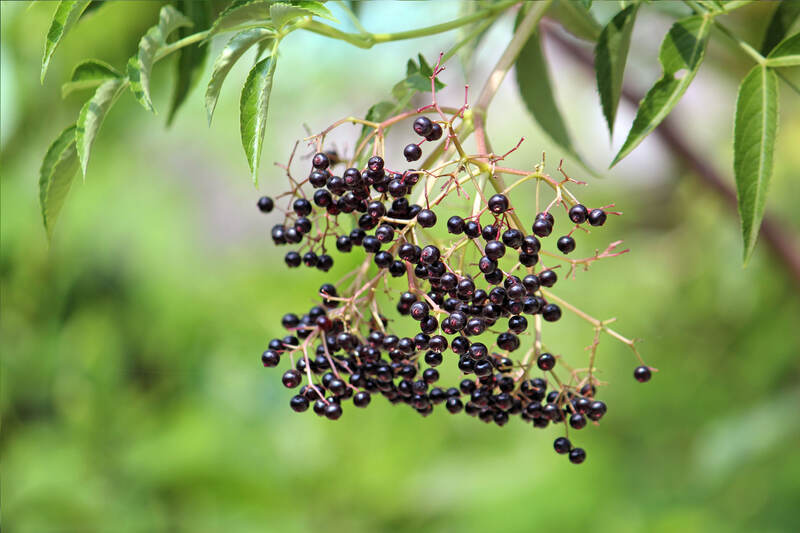
Photo Credit: Rison Thumboor / Wikimedia Commons / CC BY-SA 4.0
You may already be familiar with the health benefits many attribute to elderberry. Elderberry is an eye-opener with its bright green leaves. It also encourages you to take a deep breath to inhale its lemon-scented white flowers that bloom in the summer.
Birds flock to the dark berries. If the birds aren’t stingy, they leave a little of the fruit to be made into jellies and jams. The best part is the elderberry wine that is made from this deciduous shrub. But you must be careful to prepare the plant properly. If ingested uncooked, it can make you sick. This plant is great for hedges and, of course, edible gardens.
Plant Type: Deciduous Shrub
USDA Hardiness Zone: 3 to 8
Sun: Full sun or partial shade
Soil: Prefers moist, well-drained soils rich in organic matter. Tolerates a wide range of soil types, including sandy and clay soils.
Duration: Perennial
Fragrance: Lemon
Bloom Time: Summer, typically between June and July
Water Needs: Prefers moist soils but once established, tolerates periods of drought
Mature Height: 12 feet tall, 10 feet wide/
Potential Hazards: Uncooked berries and other plant parts contain a chemical that can cause nausea and vomiting
Maintenance Needs: Low. Prune in late winter or early spring to maintain its shape.
How to Choose Native Plants for Your Milwaukee Yard
While native plants are adapted to the local environment, each plant has its own unique characteristics and needs. Choose plants that thrive best on your property’s conditions and your maintenance schedule. For example, if a plant needs a lot of water and you have no irrigation system and don’t plan on watering it regularly, it’s not the best choice.
Be familiar with your property’s soil type. You don’t want to buy plants that thrive best in well-drained soil if your soil tends to retain water. You also want to be mindful of plants that may be harmful to pets or children, if you have any.
The bottom line is that it’s best to choose plants that are well-suited for your yard’s conditions, your availability for upkeep and maintenance, and your family’s composition and lifestyle.
FAQ About Native Milwaukee Plants
The best time to plant is about six weeks before the hard frost, which is when the temperature is consistently below 28 degrees Fahrenheit. This is usually in September and October.
Native plants help maintain the Milwaukee ecosystem and create a natural habitat and food source for local butterflies, pollinators, insects, birds, and wildlife. Native species are adapted to the city’s climate, so they take less work to maintain and require less water and fertilizer.
Knowing your area’s hardiness zone helps you pick plants that thrive best in that climate. Milwaukee is in southeastern Wisconsin, zone 5. Zones 3 and 4 also make up Wisconsin.
Where to Find Native Plants in Milwaukee
If you’ve been to Lake Park, you’ve seen native plants. Look around you as you’re driving or walking, and you’ll notice the beautiful native greenery and the birds, butterflies, and other wildlife they attract.
Check out these local native plant nurseries in the Milwaukee area recommended by the Wisconsin Department of Natural Resources:
Plant native greenery and watch your yard come alive with color, butterflies, and birds. You don’t have to stop there. Bring even more excitement to your property with other low-maintenance landscaping designs.
Another secret to a low-maintenance yard? Leaving it to the pros. Connect with a local lawn care pro who can mow, trim, edge, and tend to the yard.
Main Image Credit: Purple coneflowers / James St. John / Flickr / CC BY 2.0